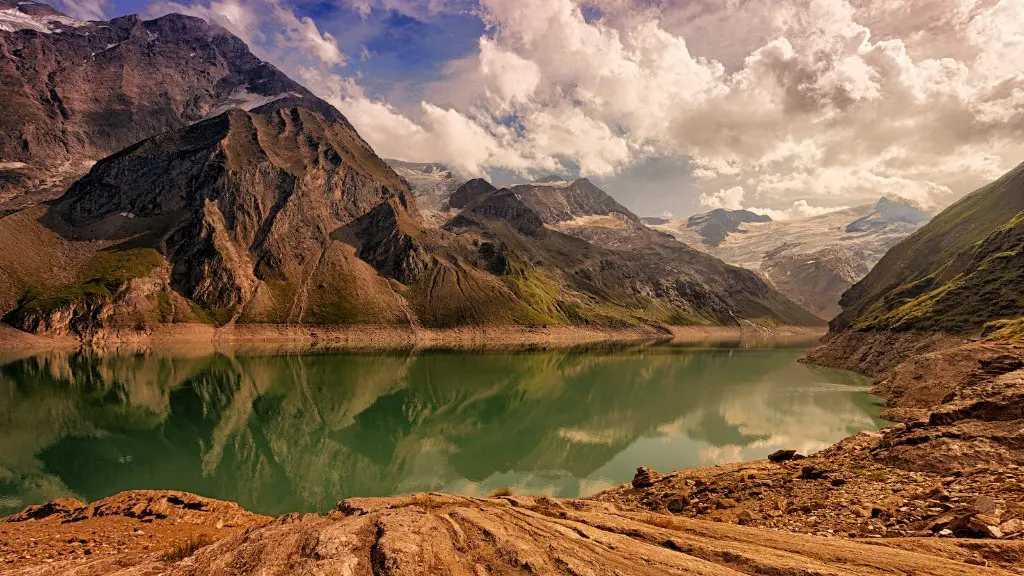The Yellow River is one of the most important rivers in China and is often referred to as the country’s lifeline. The river is responsible for providing water to millions of people and is an important source of irrigation for crops. The river is also home to a diverse range of fish and other wildlife.
However, the river is under immense strain due to the demands placed on it by the growing population and economy of China. Industrialization and agriculture have led to pollution of the river, and its water quality has deteriorated significantly in recent years. This has had a major impact on the health of the river and the people and wildlife that rely on it.
The Chinese government has taken steps to try to improve the situation, but the Yellow River continues to face serious challenges. The health impacts of the river’s decline are far-reaching and have the potential to cause serious problems for China in the future.
The yellow river is one of the most polluted rivers in the world. Health impacts from exposure to the river’s water include skin irritation, gastrointestinal problems, and liver and kidney damage. In addition, people who eat fish from the river are at risk for mercury poisoning.
How does the Yellow River affect humans?
The river basin is an important water resources for people’s livelihoods, including for food production, hydropower, industry, and domestic supply. In recent years, the river’s flow has greatly diminished, affecting the lives of millions.
The worst flood in human history occurred in 1887, when the Yellow River overran the dikes in Henan Province. That flood covered 50,000 square miles. It inundated eleven large towns and hundreds of villages. Nine hundred thousand people died, and two million were left homeless.
What are the dangers of the Yellow River
The Yellow River is one of the most dangerous and destructive rivers in the world. It has changed course 26 times and produced 1,500 floods that have killed millions of people. The river is sometimes called the “River of Sorrow” because of the devastation it has caused.
The Yellow River is an important water source for many cities and agricultural areas in China. However, pollution from sewage and agricultural runoff has become a serious problem for the river. These pollutants can cause serious environmental and health problems for the people who rely on the river for their water needs.
How does the river affect people’s lives?
Rivers provide a variety of ecosystem services that are essential to our daily lives. They provide clean drinking water, irrigation for crops, and transportation routes for goods and people. Rivers also provide habitat for important fish species, which are a vital source of food for many people around the world.
Acid rain is a major problem for the environment. It is caused by the emission of sulfur dioxide and nitrous oxide from factories and power stations. These gases enter the atmosphere and are eventually deposited in rivers, lakes and streams. The acidity of the water can then lower the pH of the water, affecting all organisms from algae to vertebrates. Biodiversity decreases with decreasing pH.
How many people died in Yellow River?
The 1887 Yellow River flood was one of the deadliest floods in China’s history, killing at least 930,000 people. The flood began in September 1887 and lasted for several weeks, wreaking havoc across the country. Many villages and towns were destroyed, and hundreds of thousands of people were displaced. The death toll from the flood was so high that it took years for the population to recover.
The death count from natural disasters has increased significantly over the past few decades. In 1938, the Yellow River flood killed 500,000-800,000 people. In 1939, the Banqiao Dam failure and floods killed 229,000 people. In 1975, the Yangtze flood killed 145,000 people. And in 1099, the flood of 1099 killed up to 100,000 people. These numbers show a trend of increasing disaster-related death tolls over time, which is likely due to a combination of factors such as population growth and urbanization.
What river has caused the most deaths by flooding
The 1887 flood on the Yellow River in China killed over 900,000 people. It was one of the deadliest floods in history and devastating for the communities affected.
The river water is a direct source of drinking water for many of the people living along the river, and the bodies are a serious form of pollution Even the Lanzhou City Water Station puts unidentified corpses back into the river The local civil service departments bury around 60 unidentified bodies a year.
This is a serious problem that needs to be addressed. There are a few things that can be done to try to reduce the number of bodies in the river:
1. Improve the identification and reporting of missing persons.
2. Work with the local civil service departments to ensure that all bodies are properly identified and registered.
3. Increase public awareness of the problem and encourage people to report any suspicious activity.
4. Increase patrols of the river to try to deter people from dumping bodies into the water.
5. Work with the local government to develop a plan for disposing of unidentified bodies in a more dignified and respectful manner.
Is the Yellow River yellow because of pollution?
The Yellow River is one of the most important rivers in China, but it is also one of the most polluted. The river contains a high amount of silt, which can be a problem for water quality. In addition, the river is used for industrial and agricultural purposes, and this results in the river being polluted with chemicals and other pollutants.
The news that the water quality of the Yellow River is so bad that it is not fit for any purpose is alarming. The responsibility for this lies squarely with the Yellow River Conservancy Committee, which is charged with protecting the river. It is clear that they have failed in their duty.
The water quality of the Yellow River is a serious problem that needs to be addressed urgently. The Conservancy Committee must take responsibility for cleaning up the river and ensuring that it meets acceptable standards.
Why is the Yellow River drying up
The Yellow River is one of China’s most important water resources, and its frequent drying up is a cause for concern. There are a number of reasons for this drying up, including a general shortage of water resources, climate change, and increasing water demand with accelerating socio-economic developments. These factors have all contributed to the problem, and it is likely that the situation will only get worse in the future unless action is taken to address the underlying causes.
The scale of the programme is vast, with hundreds of construction sites and facilities across the country. The programme will take many years to complete, and will require a huge investment of money and resources.
How are humans responsible for polluting the river?
There are still many companies that fail to treat their waste and end up pouring huge quantities of contaminants from their industrial processes into rivers and the sea. This is a major problem because it can cause serious water contamination that can have a negative impact on human health.
There are many reasons why healthy rivers are critical to our well-being. They provide the ecosystem services needed to maintain good water quality and supply, support economic growth and enable human activities including agriculture, aquaculture, fishing, recreation and tourism, and maintain cultural values.River health is essential for the provision of clean water, which is a fundamental human right. Good water quality is essential for human health, and rivers play a vital role in the water cycle. They also support the economic activity that is essential for our continued prosperity.
Rivers are under pressure from a range of human activities, and their health is declining as a result. This is having a negative impact on the ecosystem services they provide. It is therefore essential that we take action to protect and restore rivers. This will require a catchment-wide approach, involving all sectors of society.
Final Words
One of the biggest concerns regarding the health of the Yellow River is the amount of pollution that has accumulated in its waters over the years. This pollution is primarily caused by the discharge of industrial and agricultural waste into the river. The pollutants include heavy metals, chemicals, and sewage. These pollutants can cause a variety of health problems for people who come into contact with them. They can also have a negative impact on the ecosystem of the river.
The pollution of the Yellow River has had a devastating effect on the environment and human health. The river water is now so polluted that it is not safe to drink or even touch. The river water has been linked to a number of serious health problems, including cancer, liver disease, and birth defects. The pollution of the Yellow River is a major environmental and public health crisis.





